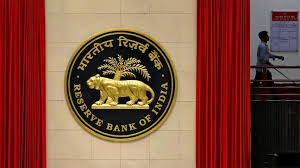New Delhi, June 7, 2025 – The Reserve Bank of India (RBI) has rolled out revised guidelines for bank lockers effective 2025, focusing on enhanced security for customers and increased accountability for banks. These updated rules introduce stricter access controls, compensation limits, and guidelines on permissible locker contents.
Under the new regulations, a dual-key system has been mandated, requiring the presence of both the customer and the bank to access a locker. If a locker remains unused for three years, banks are allowed to open it for inspection following due procedure.
One of the most notable provisions is the compensation cap. In the event of theft or fraudulent activity, banks will now be liable to compensate customers up to 100 times the annual locker rent. For example, if a locker costs ₹2,000 annually, the maximum compensation will be ₹2,00,000. However, banks will not be held accountable for losses caused by natural disasters such as floods or earthquakes.
The guidelines also explicitly restrict locker contents. Customers are allowed to store jewelry, property documents, and limited cash, while weapons, explosives, high volumes of cash, or any illegal materials are strictly prohibited.
Locker rents will continue to vary across banks and locations. Some estimated annual fees are:
SBI: ₹2,000 – ₹12,000
HDFC Bank: ₹3,000 – ₹20,000
ICICI Bank: ₹1,200 – ₹5,000
PNB: ₹1,250 – ₹10,000
Canara Bank: ₹2,000 – ₹10,000
To open a locker, customers must provide valid identity and address proof, passport-sized photographs, and maintain a minimum bank balance as stipulated by the bank.
In its advisory, the RBI recommended customers avoid storing extremely high-value items, keep locker keys secure, and retain a signed copy of the locker agreement. Since banks do not insure locker contents, customers are also encouraged to consider private insurance for added protection.
These rules, aimed at protecting consumer interests and promoting transparency, are a continuation of RBI’s broader initiative to modernize banking operations and improve service standards.
New RBI Locker Rules 2025 Aim to Boost Security, Limit Bank Liability

